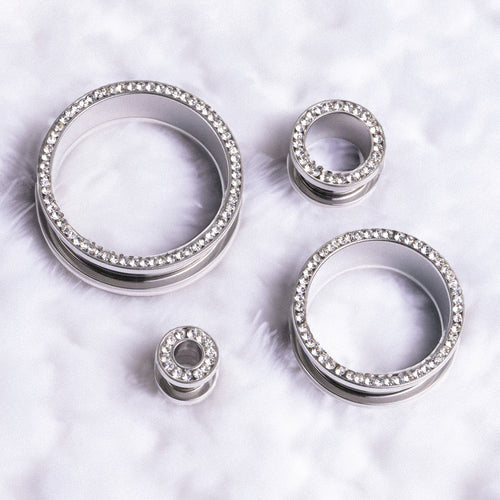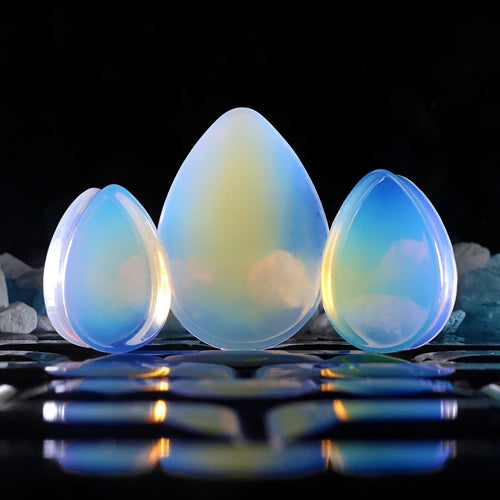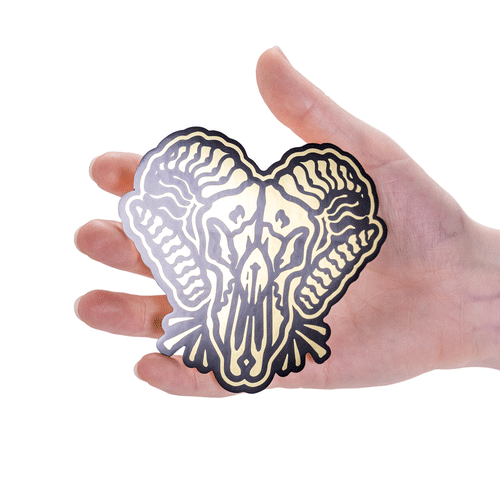
ERHALTEN SIE SOZIAL MIT UNS
AKTUELLE ARTIKEL
Newsletter
Bleiben Sie über die neuesten Werbeaktionen, Neuigkeiten und Veröffentlichungen auf dem Laufenden!
The Art of Dead Stretching: A Comprehensive Guide
In the world of body modification, the process of stretching piercings to accommodate larger gauges or sizes is a common practice. One method that has gained popularity among enthusiasts is dead stretching.
Dead stretching involves gently inserting larger pieces of jewellery into a healed piercing without the aid of lubricants or taper tools. As experts in body jewellery, Custom Plugs is here to provide you with a detailed guide to dead stretching, covering everything from its benefits to the step-by-step process.
What is dead stretching?

Dead stretching, also known as natural stretching or passive stretching, is a method of gradually increasing the size of a piercing by inserting larger jewellery directly into the piercing hole. Unlike other stretching methods that may involve lubricants or taper tools, dead stretching relies on the body's natural elasticity and healing properties to accommodate the larger jewellery.
Risks of Dead Stretch
Improper stretching techniques or using unsuitable materials can result in complications such as blowouts, tears, and infections. A blowout occurs when the skin is forcefully pushed out of the back of the piercing.
Furthermore, there's a heightened risk of infection, as with any open wound, which can become trapped in the ear and spread internally if the jewellery impedes airflow. This is particularly common with materials like silicone. It's crucial to allow the ear to breathe adequately to prevent infections.
During the stretching process, it's important to note that it should only feel like a warm, tight sensation. Any pain or discomfort indicates that you should stop immediately and allow time for healing. Each individual's healing process varies, so patience is paramount.
Benefits of Dead Stretch
Gentler on the Skin: Dead stretching is considered gentler on the skin compared to other stretching methods that may involve friction or pressure. Since it relies on the body's natural elasticity and allows the ears to fully heal, it reduces the risk of tearing or damaging the skin.
Less Discomfort: Many individuals find dead stretching to be less painful or uncomfortable compared to other methods. The gradual process allows the skin to adjust more comfortably to the larger size.
Cost-Effective: Dead stretching eliminates the need for specialised stretching tools, making it a cost-effective option for stretching piercings.
Less Risk of Infection: With proper hygiene practices, dead stretching carries a lower risk of infection compared to methods that involve introducing foreign substances or tools into the piercing.
Step-by-Step Guide to Dead Stretching Ears
Prepare Your Jewellery: Start by selecting high-quality jewellery in the size you want to dead stretch ears to. Ensure that the jewellery is clean and sterilised to minimise the risk of infection.
It's recommended to avoid using silicone or acrylic jewellery unless your piercing is fully healed, as they can increase the risk of infections, unpleasant odours, and discomfort.
Similarly, wearing metal plugs for extended periods can also lead to odour development due to their synthetic nature. To prevent this, remove your jewellery during showers and wash both the jewellery and your lobes thoroughly. Metals, with their less porous surface, are generally better suited for healing stretched lobes.
Organic materials such as bone, horn, wood, and stones are often preferred for their comfort in long-term wear, allowing your ears to breathe due to their porous surfaces. This characteristic usually eliminates any odours associated with prolonged wear.
Cleanse the Piercing: Before beginning the stretching process, thoroughly clean the piercing and surrounding area with a saline solution or gentle antimicrobial soap. This helps reduce the risk of infection and ensures a sterile environment for stretching.
Here at Custom Plugs, we stock high quality silver steel and black steel dead stretching plug kits.
Wait for Healing: Dead stretching should only be attempted on fully healed piercings. It's essential to wait until the piercing has completely healed before attempting to stretch it to avoid complications such as tearing or inflammation.
Insert Larger Jewellery: Gently insert the larger jewellery into the piercing hole, applying steady and even pressure. Take your time and listen to your body's cues; if you experience resistance or discomfort, stop and reassess before proceeding.
Monitor Healing: After stretching, monitor the piercing closely for any signs of irritation, infection, or excessive swelling. Continue to clean the piercing regularly and avoid touching it with unwashed hands to prevent contamination.
Gradual Sizing: Dead stretching can be done gradually over time by gradually increasing the size of the jewellery. This allows the skin to adapt slowly to larger sizes, reducing the risk of trauma or tearing.
Patience Is Key: Dead stretching ears requires patience and consistency. Rushing the process or attempting to stretch too quickly can result in complications and slow down the healing process. Listen to your body and give it the time it needs to adjust.
Shop Dead Stretching Plugs at Custom Plugs Today!

Dead stretching is a popular and effective method for stretching piercings, offering a gentler and more natural approach compared to other methods. By following proper hygiene practices and taking your time, you can safely and comfortably stretch your piercings to accommodate larger gauges.
As with any body modification procedure, it's essential to prioritise safety and listen to your body's cues throughout the stretching process. With patience and care, you can achieve your desired gauge size while maintaining the health and integrity of your piercings.
Shop our dead stretching plugs today!
Available in silver steel and black steel!
Frequently Asked Questions
Is dead-stretching suitable for all types of piercings?
Dead stretching is generally suitable for well-healed piercings that have fully recovered from the initial piercing process. It's commonly used for earlobe piercings but can also be applied to other areas, such as cartilage piercings, though caution should be exercised as cartilage may require more delicate handling. It's crucial to ensure that the piercing is fully healed before attempting dead stretching to minimise the risk of complications.
How long does it take to dead stretch ears to larger sizes?
The time it takes to dead stretch ears to larger sizes varies from person to person and depends on factors such as the thickness and elasticity of the skin, the size difference between stretches, and individual healing rates. Generally, it's recommended to wait at least 4–6 weeks between each stretch to allow the skin to adjust and heal properly. However, some individuals may require longer intervals between stretches for optimal healing.
Can dead stretching be reversed if I decide to downsize my gauges?
Yes, dead stretching can be reversed by downsizing to smaller gauges or allowing the piercing to shrink naturally over time. If you decide to downsize your gauges, it's essential to do so gradually to avoid causing further trauma to the piercing. Additionally, regular massaging of the earlobe with moisturising oil can help improve elasticity and encourage the piercing to shrink more effectively.




-v1657710003014.jpg?512x640&transform=resize=350)




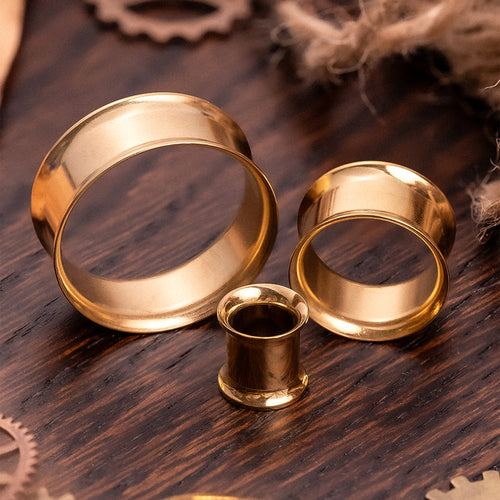



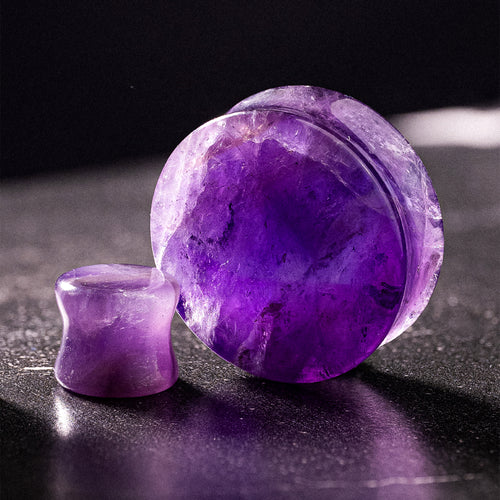





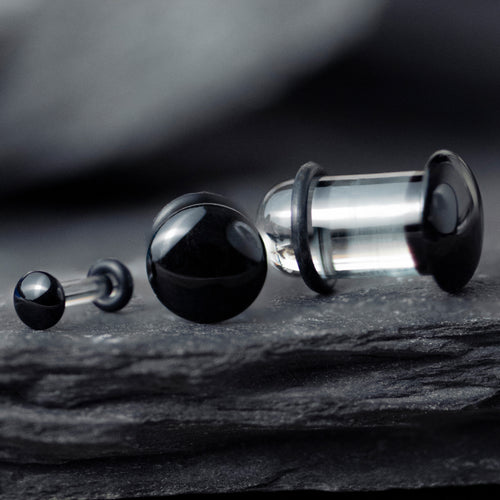









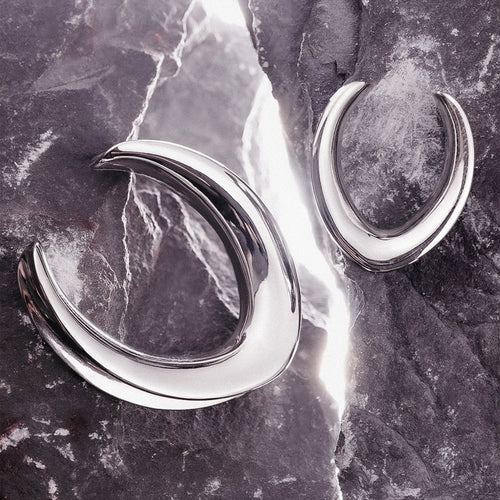




-Photographer-@domdirekt-for-@tenforfifty-v1674724276532.jpg?2400x3000&transform=resize=350)
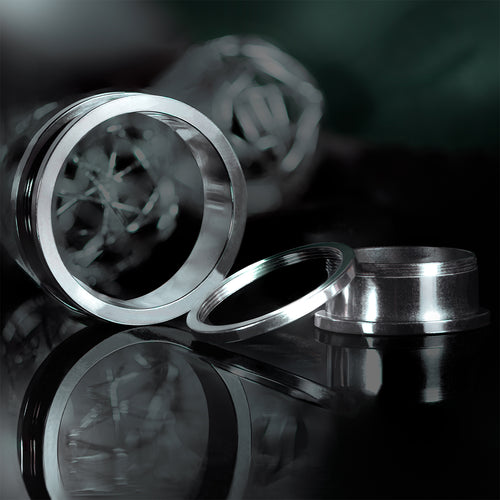




























-v1652780384796.jpg?1024x1280&transform=resize=350)

-copy-v1674726508930.jpg?2316x3088&transform=resize=350)














